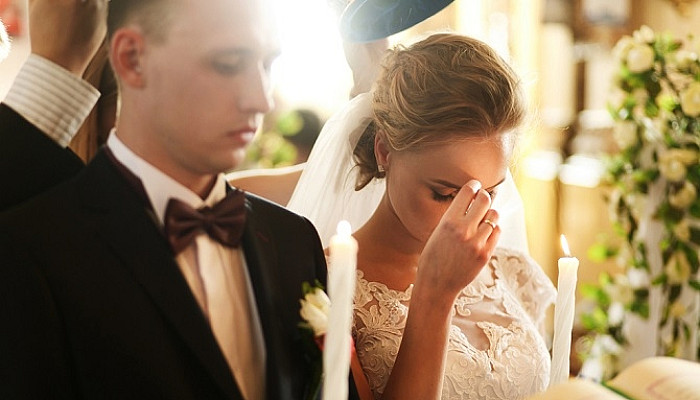
Non Religious Wedding Ceremonies Outlined

Basics of Wedding Ceremonies
The Western custom of a bride wearing a white wedding dress or white bridal wedding gown, came to symbolize purity in the Victorian era (despite popular misconception and the hackneyed jokes of situation comedies the white dress did not actually indicate virginity, which was symbolized by a face veil). Within the ” white wedding” tradition, a white dress and veil would not have been considered appropriate in the second or third wedding of a widow or divorcee. The specific conventions of Western weddings, largely from a Protestant and Catholic viewpoint, are discussed at ” White wedding.”
Something Old - Something New
A long-standing modern tradition is for brides to wear or carry “something old, something new, something borrowed something blue” during the service. It is considered good luck to do so. Oftentimes the bride attempts to have one item that meets all of these qualifications, such as a borrowed blue handerchief which is “new to her” but loaned by her grandmother (thus making it old.)
Wedding Music
Music often played at wedding ceremonies and receptions includes:
- The ” Bridal Chorus” from Lohengrin by Richard Wagner, often used as the processional and commonly known as “Here Comes the Bride” - Note: Richard Wagner is said to have been Anti-Semitic, and as a result, the Bridal Chorus is often not used at Jewish weddings.
- Johann Pachelbel’s Canon in D is often used as an alternative processional.
- The ” Wedding March” from Felix Mendelssohn’s incidental music for the Shakespeareplay, A Midsummer Night’s Dream, often used as a recessional.
- The “Toccata” from Charles-Marie Widor’s Symphony for Organ No. 5, also used as a recessional.
- Segments of the Ode To Joy, the fourth movement of Ludwig van Beethoven’s Ninth Symphony, sometimes make appearances at weddings; its message of unity is suitable for the occasion.
- At wedding receptions, Der Ententanz, a 1950s Swiss Oom-pah song known more commonly in America as The Chicken Dance, has become a popular part of the reception dance music.
The Wedding Reception
A wedding is often followed or accompanied by a wedding reception, at which an elaborate wedding cake is served. Western traditions include toasting the bride(s) and/or groom(s), the newlyweds having the First dance, and cutting the cake. If there is a bride, she throws her bouquet to the assembled group of all unmarried women in attendance, and the person who catches it is supposed to be the next to wed. A fairly recent equivalent has the groom throwing the bride’s garter to the assembled unmarried men; the man who catches it is supposedly the next to wed. Now, at some receptions, the man who caught the garter has to place it on the leg of the woman who caught the bouquet. This sometimes causes those two people to start dating, and causing them to, indeed, be the next to wed.
This content was created by AI





















